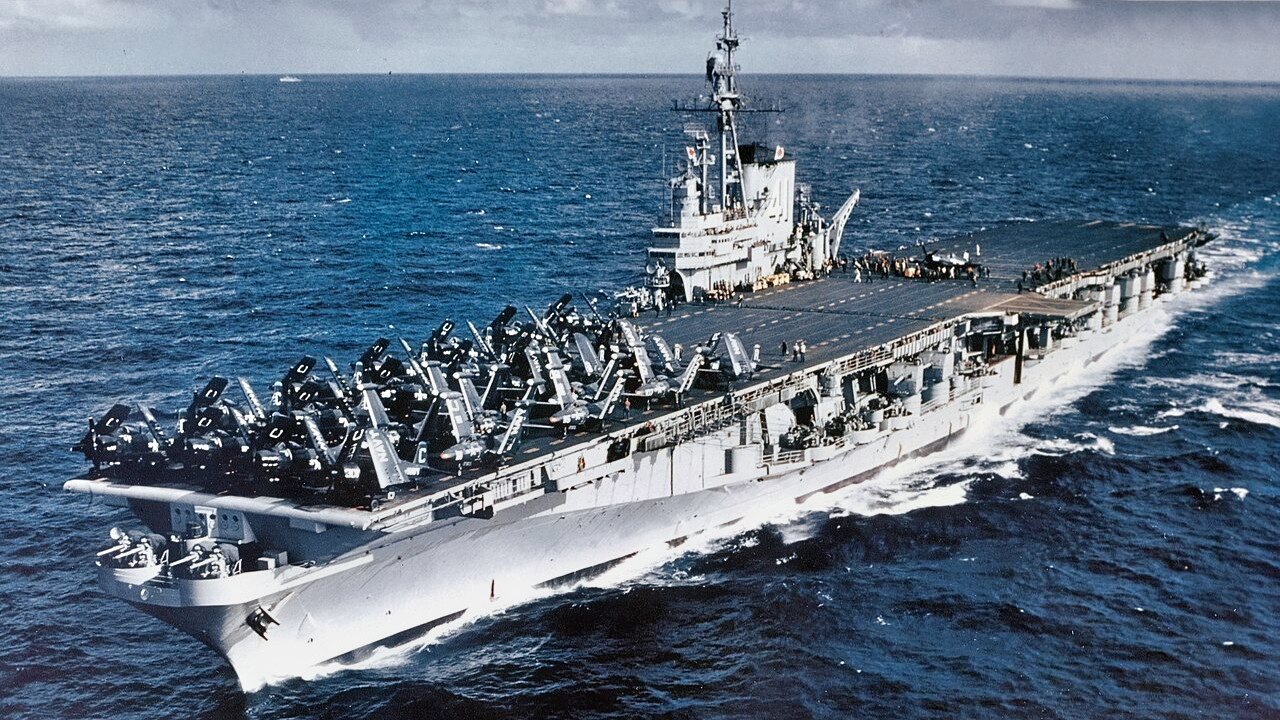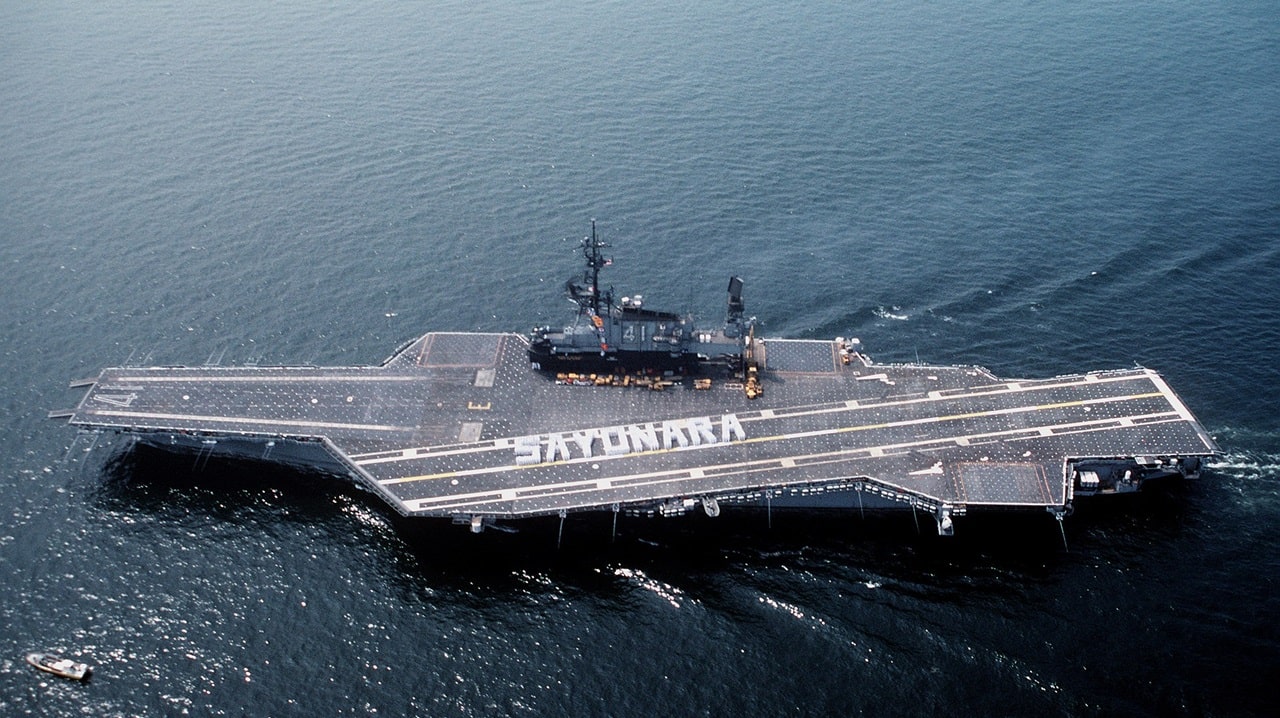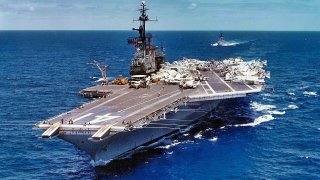The Midway-class Aircraft Carriers are U.S. Navy Legends for a Reason
The Midway-class aircraft carriers, named after the iconic Battle of Midway, consisted of three ships—USS Midway, USS Coral Sea, and USS Franklin D. Roosevelt.
Summary and Key Points: The Midway-class aircraft carriers, named after the iconic Battle of Midway, consisted of three ships—USS Midway, USS Coral Sea, and USS Franklin D. Roosevelt.

-Designed in 1940 and commissioned after World War II, the carriers were notable for their size and armored decks, allowing them to carry more aircraft than the Essex-class.
-Despite their advantages, the carriers had issues with cramped conditions, low freeboard, and an inability to pass through the Panama Canal.
-They saw action in the Vietnam War but were eventually decommissioned in the 1990s after long service careers.
Midway-Class Carriers: WWII-Era Powerhouses with Lasting Impact
Named for one of the most iconic naval battles in U.S. history, the Midway class consisted of three aircraft carriers that served from 1945 until 1992.
First designed in 1940, the lead ship of the Midway class, USS Midway, would not be commissioned until one month after the atomic bombs were dropped on Hiroshima and Nagasaki and forced a Japanese capitulation. Six Midway carriers were planned, but rapidly changing circumstances in the 1940s resulted in the production of just three.
Introducing the Midway
During World War II, U.S. designers were intrigued with the idea of reinforcing an aircraft carrier deck with armor. Studies were conducted to test the viability of melding armor to a flight deck on a carrier the size of the existing Essex class.
The study found that the addition of armor would reduce the carrier’s aircraft capacity. The Essex could haul 90-100 aircraft, whereas an Essex-like vessel with an armored deck would only be able to carry about 60. And because an aircraft carrier’s worth is directly tied to the number of aircraft it can haul, the idea was modified. Instead of adding armor to the Essex, the Navy opted to add deck armor to a larger carrier – something that could support the armor while still carrying a sizable air group.
The resulting Midway class was quite large, with the ability to carry 30 to 40 more aircraft than the Essex. But the clutter of aircraft was found to be beyond the ship’s ability to command and control effectively, so the numbers were reduced.
That extra space would eventually prove helpful in accommodating the growth in size and weight of aircraft during the transition from the prop age to the jet age.

While the size and the armored decks of the Midway were laudable, the ship still had problems. For one, it was cramped, leaving crews unhappy. Also, the vessel’s freeboard – the distance from the waterline to the upper deck level – was uncommonly low, bringing a lot of seawater on deck.
Finally, the beam width of the Midway was so great that she could not pass through the Panama Canal.
The Midway-Class Aircraft Carrier in Service
None of the three ships in the class (Midway, Coral Sea, and Franklin D. Roosevelt) was deployed to the Korean War. Each, however, was sent to the Vietnam War. Coral Sea led the class with the most deployments – six to the Gulf of Tonkin – while Midway deployed three times and Franklin D. Roosevelt deployed just once.
After the war, Midway underwent extensive modifications, while both Coral Sea and Franklin D. Roosevelt began to show the signs of their age. The vessels, despite being celebrated for their size in the 1940s, were too small to host the most current aircraft by the 1970s. The Midway class was forced to retain F-4 Phantom IIs, rather than upgrade to the F-14 Tomcat along with the rest of the fleet.
The class was slated for decommissioning, but it was saved when Ronald Reagan was elected as president and opted to preserve a massive naval fleet. When Reagan’s presidency ended, the Midways were finally decommissioned, ending an impressive tenure.
About the Author: Harrison Kass
Harrison Kass is a defense and national security writer with over 1,000 total pieces on issues involving global affairs. An attorney, pilot, guitarist, and minor pro hockey player, Harrison joined the US Air Force as a Pilot Trainee but was medically discharged. Harrison holds a BA from Lake Forest College, a JD from the University of Oregon, and an MA from New York University. Harrison listens to Dokken.
Image Credit: U.S. Navy.


